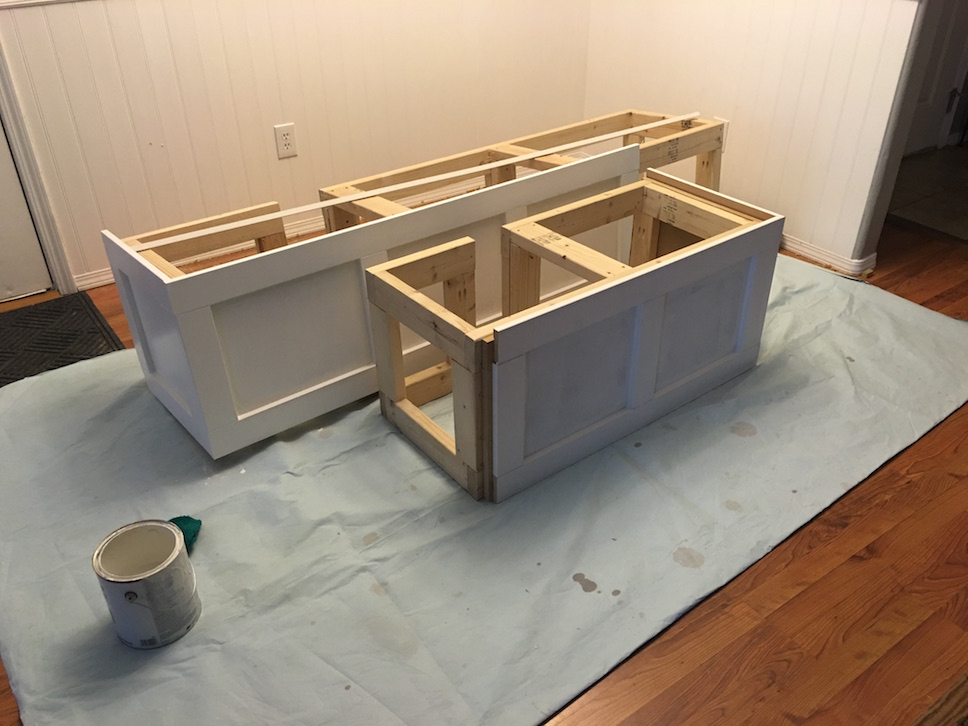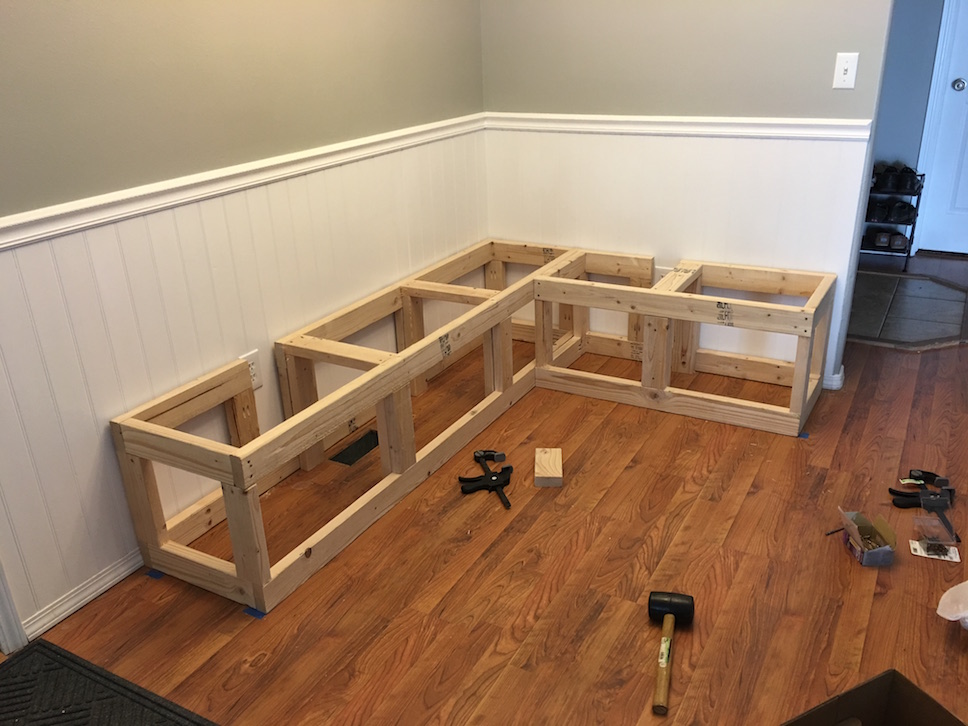DIY Breakfast Nook: Transform a corner of your home into a cozy and inviting space where you can enjoy your morning coffee and meals. This guide will take you through the entire process, from planning and designing to building and adding finishing touches, helping you create a breakfast nook that perfectly complements your style and needs.
Whether you have a small apartment or a spacious house, a DIY breakfast nook can be a wonderful addition. It provides a dedicated area for enjoying meals, reading a book, or simply relaxing. By building your own breakfast nook, you can customize it to your specific preferences and create a space that truly feels like your own.
Building the Breakfast Nook Structure

The breakfast nook structure is the foundation of your cozy dining space. It’s where you’ll enjoy your morning coffee and weekend brunches. Let’s explore the different construction methods and design a simple structure using readily available materials.
Freestanding Units
Freestanding units are self-supporting structures that don’t rely on existing walls or floors for support. They offer flexibility in placement and can be moved around as needed. These units are typically constructed from wood, metal, or a combination of both.
- Advantages: Freestanding units are easy to assemble and disassemble, making them ideal for renters or those who may want to change their layout in the future. They also offer a wide range of styles and designs to suit any aesthetic.
- Disadvantages: Freestanding units can be less stable than built-in structures, especially in high-traffic areas. They also take up more floor space than built-in options.
Built-in Benches
Built-in benches are integrated into the existing walls and floors, providing a seamless and custom look. They are typically constructed from wood, with the seating area built into the wall and the backrests attached to the wall or ceiling.
- Advantages: Built-in benches offer a sense of permanence and can create a more spacious feel in smaller kitchens. They are also very sturdy and can accommodate a lot of weight.
- Disadvantages: Built-in benches require more extensive construction and may be difficult to modify or remove later. They also require careful planning to ensure they fit seamlessly with the existing structure.
Window Seat Conversions
Transforming an existing window seat into a breakfast nook is a popular option for maximizing space. It involves adding a table and cushions to the window seat, creating a cozy and inviting spot for dining.
- Advantages: Window seat conversions are a relatively easy and inexpensive way to create a breakfast nook. They offer a beautiful view and can be customized to fit the existing space.
- Disadvantages: Window seat conversions may not be suitable for all window sizes or layouts. They also require careful planning to ensure proper seating and table placement.
Designing a Simple Breakfast Nook Structure
For a simple and practical breakfast nook structure, consider using readily available materials like plywood, 2×4 lumber, and basic hardware. Here’s a basic design:
- Frame: Use 2×4 lumber to build a rectangular frame for the seating area. The frame should be attached to the wall and floor for stability.
- Seating: Cut plywood panels to fit the frame and attach them to create the seating surface. For added comfort, you can add cushions or padding.
- Backrest: Build a simple backrest using 2×4 lumber and plywood. The backrest can be attached to the wall or ceiling for support.
- Table: A simple table can be constructed using plywood and 2×4 lumber. Consider adding a tabletop to create a dining surface.
Attaching the Structure, Diy breakfast nook
Securely attaching the breakfast nook structure to existing walls and floors is crucial for stability and safety.
- Wall Attachment: Use heavy-duty anchors and screws to attach the frame to the wall studs. Ensure the screws are long enough to penetrate the wall stud for maximum support.
- Floor Attachment: Use lag screws or heavy-duty anchors to attach the frame to the floor joists. Ensure the screws are long enough to penetrate the floor joist for secure support.
Sustainable and Eco-Friendly Options: Diy Breakfast Nook

Creating a breakfast nook that is both stylish and environmentally responsible is achievable with a little planning and creativity. You can reduce your environmental impact and contribute to a more sustainable lifestyle by incorporating recycled materials, energy-efficient practices, and eco-friendly finishes.
Benefits of Sustainable Materials
Choosing sustainable materials for your breakfast nook offers numerous benefits. By using recycled materials, you reduce the demand for new resources and lessen the strain on landfills. Moreover, opting for sustainable materials often means choosing products with lower emissions during production, contributing to cleaner air and a healthier environment.
Eco-Friendly Finishes and Furnishings
- Recycled Wood: Using reclaimed wood for your breakfast nook table and benches adds character and reduces waste. This wood often comes from salvaged buildings, barns, or other sources, giving it a unique history and a sustainable edge.
- Bamboo: A rapidly renewable resource, bamboo is a strong and durable material that can be used for furniture, flooring, and even countertops. Its natural beauty adds a touch of warmth to the space.
- Cork: Cork is a sustainable and renewable material harvested from the bark of cork oak trees without harming the tree. It is naturally insulating, sound-absorbing, and can be used for flooring, wall coverings, and even tabletops.
- Recycled Glass: Recycled glass can be used to create beautiful and durable countertops, backsplashes, and even mosaic tiles for the floor. This process diverts glass from landfills and gives it a new life in your breakfast nook.
- Natural Fabrics: For cushions and upholstery, consider using natural fabrics like organic cotton, linen, or hemp. These materials are biodegradable and often require less water and pesticides during cultivation.
Last Word
Building your own DIY breakfast nook is a rewarding project that allows you to personalize your home and create a cozy space for enjoying meals and relaxing. By following the steps Artikeld in this guide, you can transform a corner of your home into a charming and functional breakfast nook that will be the envy of your family and friends. Remember to focus on creating a space that reflects your unique style and preferences, and don’t be afraid to experiment with different design elements to create a breakfast nook that is truly your own.
Creating a DIY breakfast nook can be a fun and rewarding project. You can personalize the space to fit your style and needs, and it’s a great way to add a cozy and inviting feel to your home. If you’re looking to customize the look and feel of your computer’s interface, you might find Winaero Tweaker a useful tool.
This program lets you tweak various settings and personalize your Windows experience. Once you’ve got your computer looking just right, you can enjoy your breakfast nook even more.




